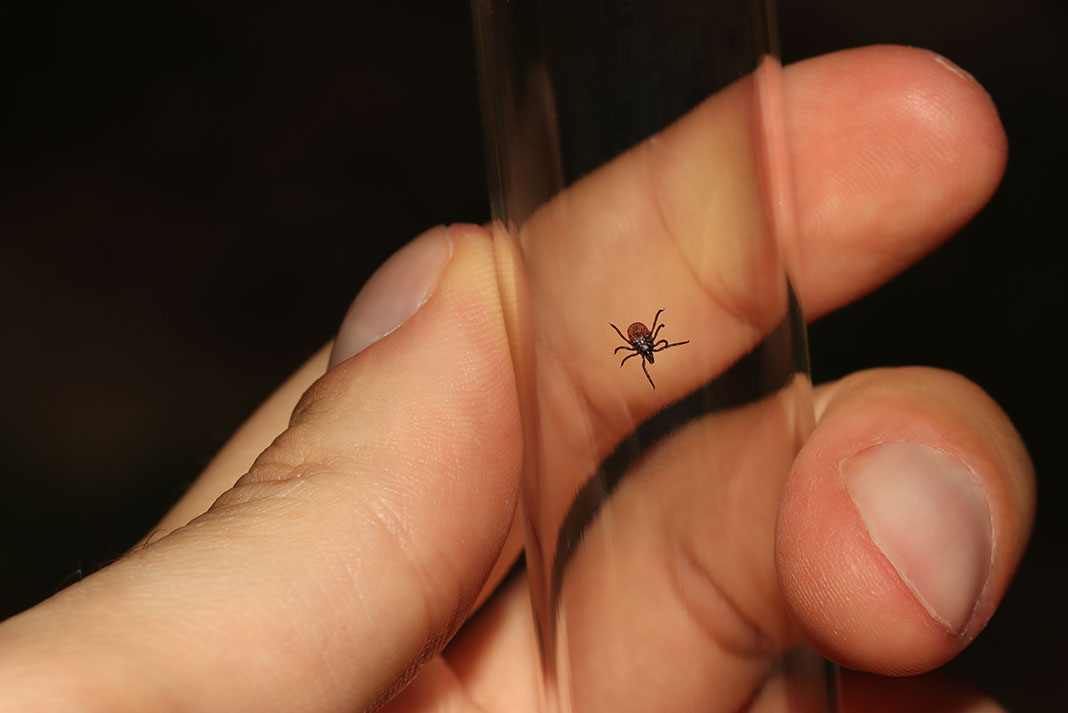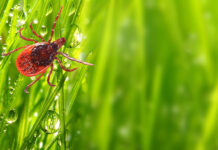I discovered a tick embedded in my crotch. Where? I was on day five of a 10-day canoe trip across Quetico Provincial Park. Ticks love to attach themselves to dark, moist places where the tissue is soft and thin. Think armpits, behind ears and knees, and, you guessed it, the vulnerable groin.
Of course, I panicked and gave it a yank instead of gingerly removing it with tweezers. My hastiness left half the tick under my skin. Yuck.
Worried about infection and catching potentially debilitating Lyme disease, I asked my long-suffering canoe buddy, Andy, to have a look at the wound. He politely refused. I used the mirror on my forestry compass to dig out the remainder of the arachnid.
For the rest of the trip, I suffered from phantom tick syndrome. You know what I mean. My skin crawled as I imagined ticks creeping silently on their eight tiny legs across my body. Every itch and tickle was heightened, making me yank up my shirt and pantlegs to inspect my unblemished skin underneath.
Expert tips to deal with the great tick invasion
Most backcountry paddlers can manage ravenous mosquitos and blackflies, no problem. But ticks are freaky. And over the last few years, I’ve heard more complaints from canoeists about ticks invading their favorite paddling paradises—ticks thriving where there were no ticks before.
That’s because the range of several species of ticks has increased dramatically throughout North America. Fortunately, of the 200 species of ticks in America, only a handful spread bacterial or viral pathogens. They vary by region. The mid-West has Rocky Mountain spotted fever spread by dog ticks. The Heartland virus, spread by Lone Star ticks, made headlines this spring in the southeastern states. In the northeastern states and parts of Canada, Lyme disease spread by blacklegged ticks has everyone talking. The U.S. Center for Disease Control and Prevention estimates nearly half a million Americans get Lyme disease each year.

It wasn’t always this way. In the past two decades, the number of U.S. counties with an established blacklegged tick population has more than doubled. In addition, the blacklegged tick’s range expands north at a rate of 25 to 50 miles a year. In the ‘70s, there was just one known colony of blacklegged ticks in Canada, located on the north shore of Lake Erie. However, by the 2000s, blacklegged ticks were found all over southern Ontario, Quebec, Manitoba, and the Atlantic provinces, and huge swaths of those provinces are now considered Lyme disease risk areas. According to scientists, the increase of ticks and their expanding range is partly due to milder winters.
How to handle ticks on trip
The good news, if there is any, is that even with the expansion of the ticks’ ranges, the methods to prevent a bite remain the same. Long, light-colored pants with socks tucked in and long sleeves will help protect paddlers, as will applying bug juice with DEET around the ankles. Some paddlers prefer clothing impregnated with the pesticide permethrin.
Even with those precautions, I still recommend performing tick checks every night in camp. It’s crucial in heavily tick-infested areas. It’s best to use the buddy system. Just make sure to choose a paddling partner who has your, erm, backside.
“Hey, man—can I catch a ride?” A tick reaches out its front legs, questing for its next blood meal. | Feature photo: iStock



 This article was first published in the Summer 2022 issue of Paddling Magazine.
This article was first published in the Summer 2022 issue of Paddling Magazine. 






Interesting to read of that the only know blacklegged tick colony in Canada was on the northern shore of Lake Erie. I have heard it suggested that the spread of these ticks can be connected to the successful spread of wild turkeys which were reintroduced in Ontario on the north shore of Lake Erie. The vet that I heard this from said the turkeys act as a vector and are not adversely affected by the ticks, but have been spread to whitetailed deer populations much quicker then the deer could move.